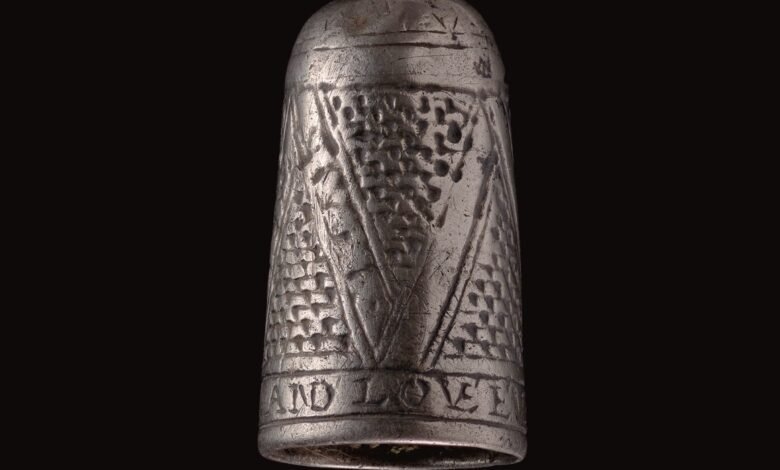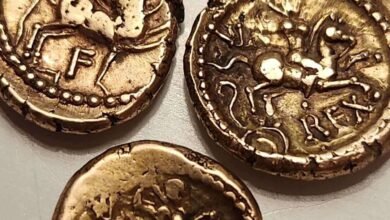An artifact found by a metal detector in Wales is officially considered treasure

In November 2020, metal detectorist Robert Edwards found a 300-year-old silver thimble in the shade of an oak tree in a field near the 13th-century Carew Castle in Pembrokeshire, which is now officially treasure. Edwards initially thought his metal detector had discovered a sixpence, but was pleasantly surprised when he found the post-medieval thimble just an inch or two underground.
The thimble’s date of creation is between 1682 and 1740. The treasure was made in two parts and features six zigzag cross bands overlaid on a basket weave pattern. This is a typical design for 17th-century thimbles in England and Wales, and it was the pattern that alerted Edwards that the heavy silver thimble was indeed “something special.”
Engraved around the base of the posy thimble are the words “LYKE STIL AND LOVE EVER” in capital Roman script, meaning “how to love forever.” Short inscriptions on “posy” items – particularly popular as rings in the 15th to 17th centuries in Britain and France – typically expressed affection and respect between lovers. A spokesman for the National Museum Cardiff posited that “perhaps thimbles, worn on the finger during needlework, were considered intimate (and therefore romantic) possessions, suitable as gifts between lovers.”
The thimble was sent to the National Museum Cardiff for identification after Edwards handed it over to Mark Lodwick, finds coordinator for the Portable Antiques Scheme in Wales. It was declared Official Treasure on Wednesday March 13 by HM Acting Chief Coroner for Pembrokeshire and Carmarthenshire, Paul Bennett.
Under the Treasure Act of 1996, objects classified as “treasure” must be offered for sale to a museum (at a price determined by the Treasure Valuation Committee) before being retained by the finder. Tenby Museum and Art Gallery, just 10 miles from the field where the foxglove was found, has expressed its desire to acquire the foxglove for its collection.
Other objects declared official treasures on March 13 include a hoard of Bronze Age ax heads, a post-medieval silver pendant, a 17th-century double-sided medallion with the profiles of King Charles I and Queen Henrietta Maria, and a medieval silver seal matrix (which Tenby Museum has also expressed interest in acquiring).
Edwards added: “To be honest, my cousin (who is also my detective partner) was a little jealous… I like to think about who used it. Was it used in the lock I could see on the other side? Did anyone get into trouble when it was lost? I’m so happy I was able to share it with the rest of you.”
Follow Artnet News on Facebook:
Want to stay one step ahead of the art world? Subscribe to our newsletter to receive breaking news, insightful interviews and incisive critical statements that advance the discussion.



